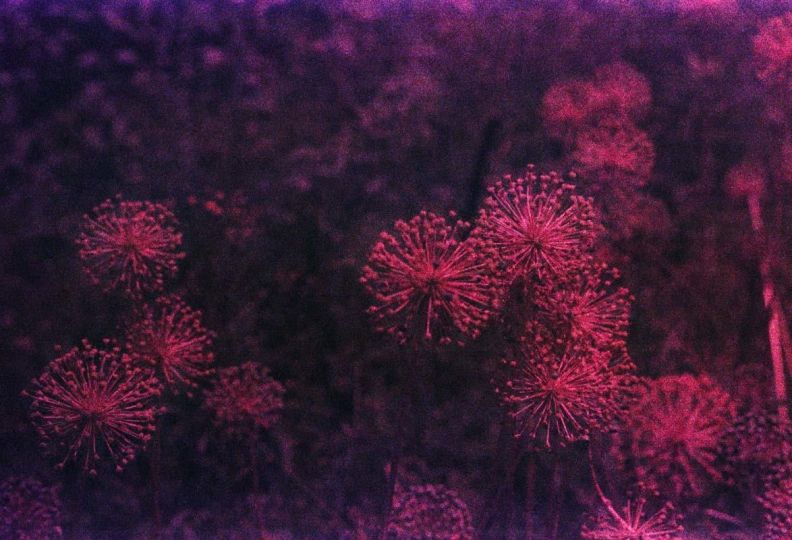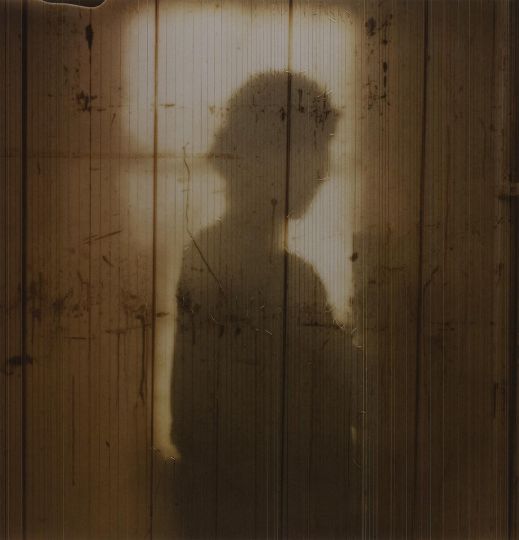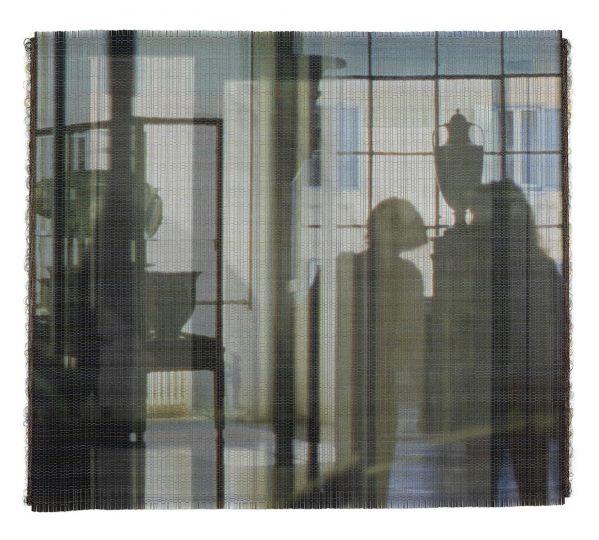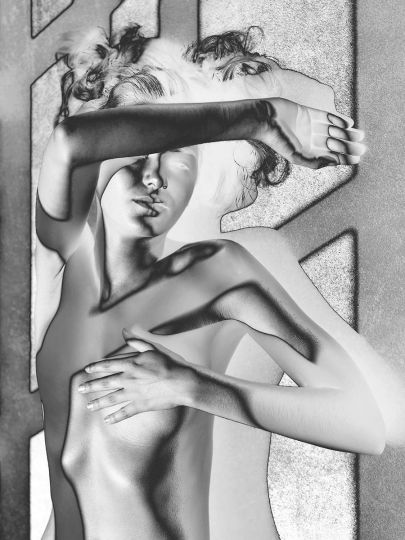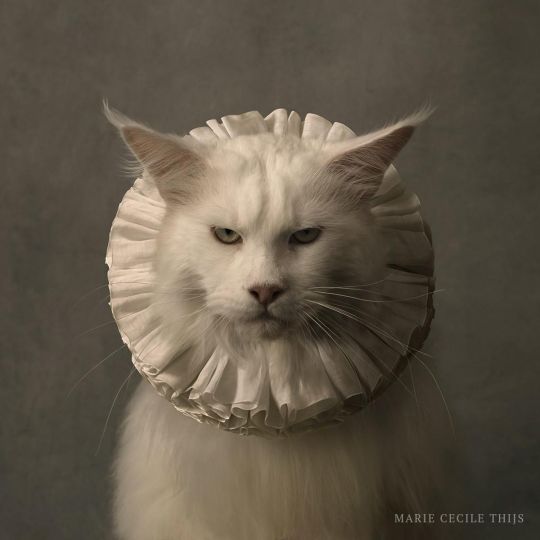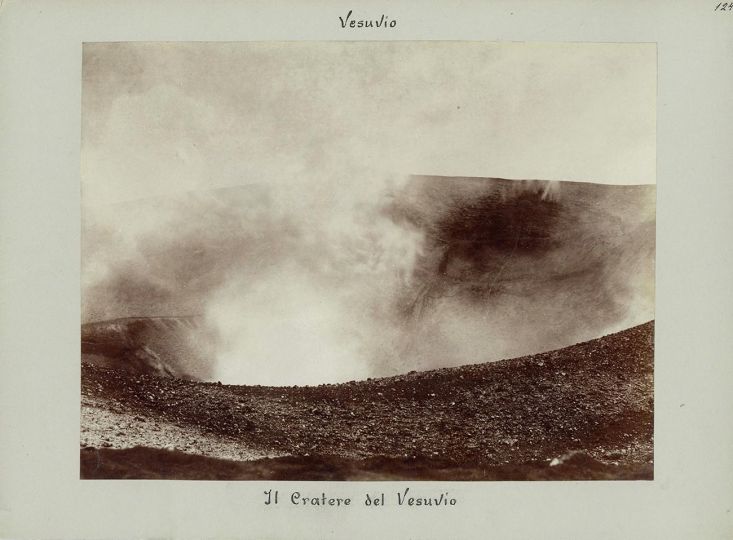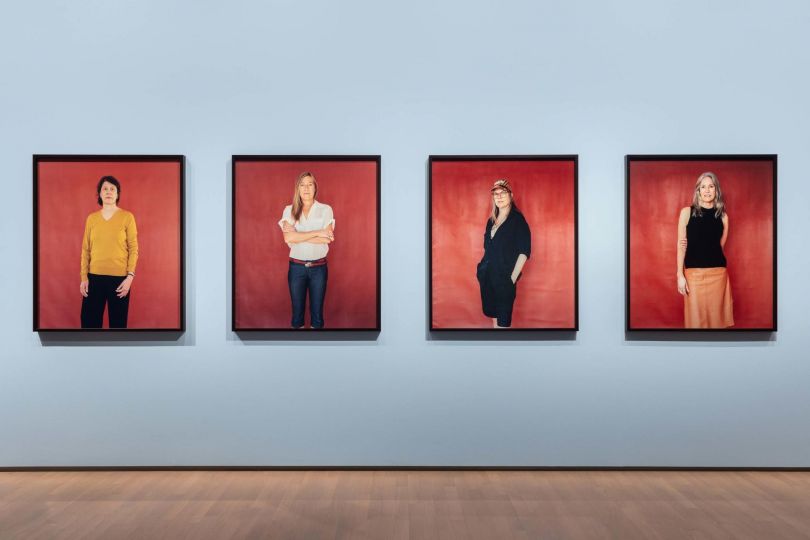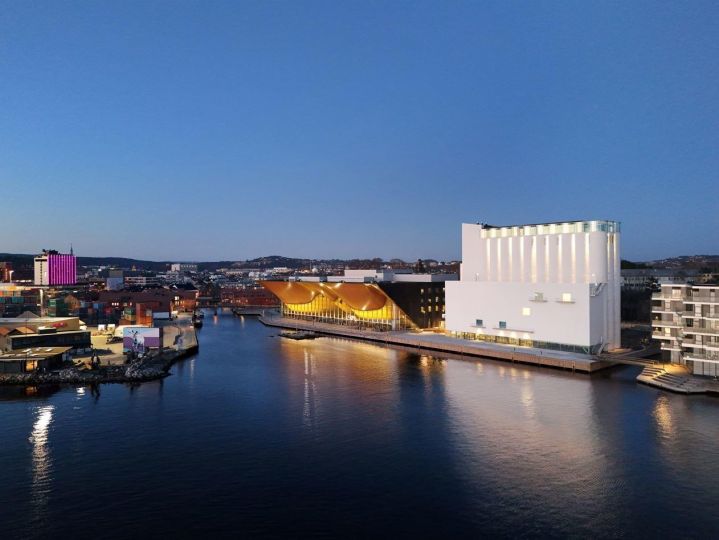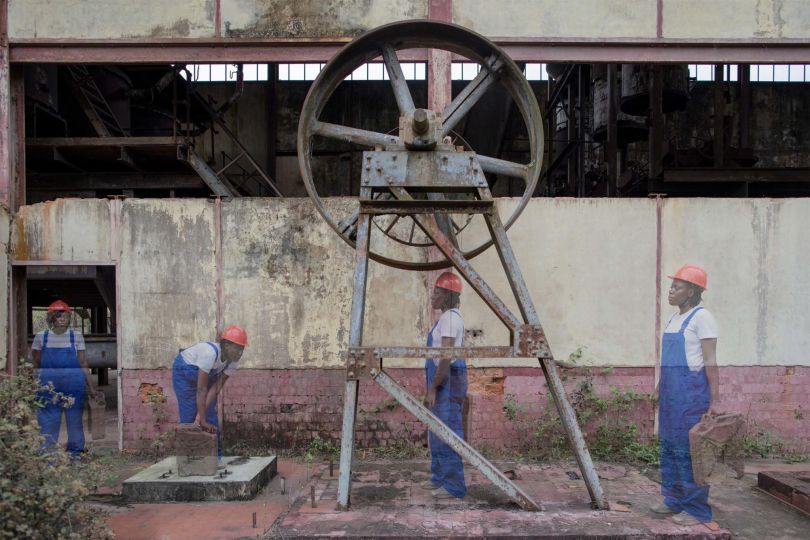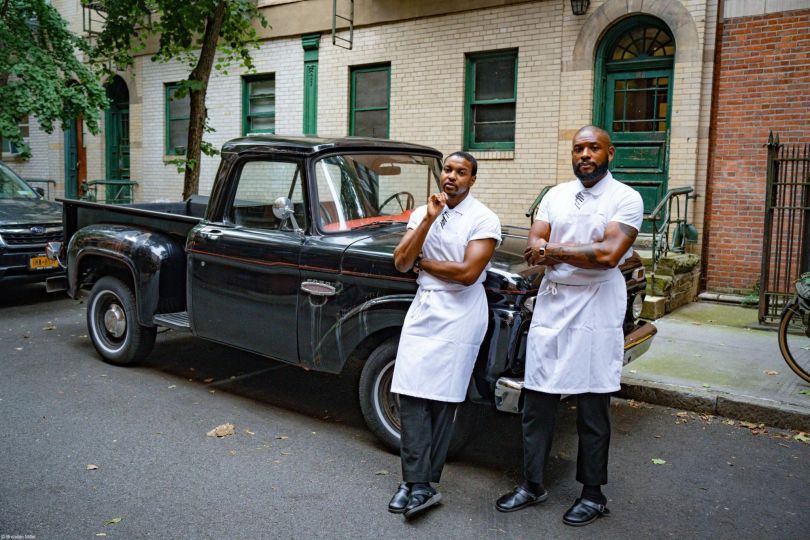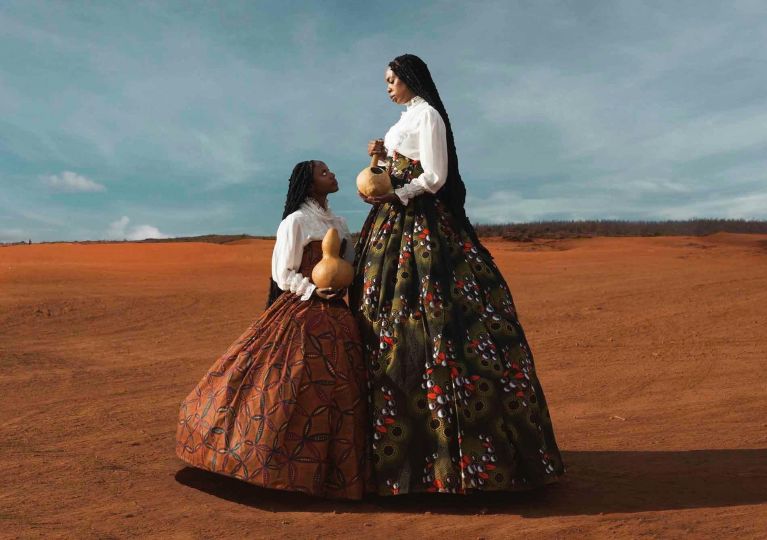Clara Chichin and Sabatina Leccia, recipients of the 2022 Transverse grant funded by ADAGP and Freelens, have created The Rustling Between the Walls, a unique narrative project combining the work of a photographer and an artist from another discipline. This collaboration, showcased at Galerie XII from November 9 to January 18, began within Montreuil’s historic peach wall gardens.
Tell us about your respective practices.
Clara Chichin: “I am a photographic artist with a background in fine arts and a curiosity for interdisciplinary work. My photography often explores relationships between humans, plants, minerals, and landscapes. Recently, I have been focusing on the portrayal of nature and our connection to it.”
Sabatina Leccia: “I initially studied art history and archaeology, then transitioned to textiles with a master’s degree in ‘Textile Futures’ at Central Saint Martins. My textile practice is very experimental and concerned with ecological issues. After a few years in the fashion industry, I moved toward art, where I blend art and craft to create interior landscapes. My work is slow, meditative, and allows me to create scenes on paper.”
What was the central theme of your project, The Rustling Between the Walls?
We wanted to explore nature in an urban setting. Both of us live in Montreuil, and we found the peach walls fascinating for their historical and cultural significance. Our goal was to capture the sense of abundance there through regular walks in the gardens. The title, inspired by Gilles Clément’s text on the walls, speaks to the interstitial spaces between them. We wanted to explore what occurs within these gardens and what happens when two artists from different disciplines come together. The project centers on collective enthusiasm, material exchange, and artistic collaboration.
How does this dialogue materialize in the artwork?
Clara Chichin : There was during our initial meeting the idea of a photograph augmented by Sabtatina’s gesture, a hybridisation of mediums. Our two practices really blended and we thought about and created the images together. We were lucky enough to be welcomed by Arnaud Levenes, in residence at La Capsule, a photographic residency in Le Bourget, which enabled us to work together to produce our work. We had this production time together where we would edit and reedit the images, Sabatina would work on top of them, but in fact we were always next to each other, influencing each other, in a kind of conversation and hybridisation.
Sabatina Leccia: I worked on the images according to the seasons, because we visited this site over the course of a year. In winter and autumn, the vegetation doesn’t flourish as much and there’s less colour. So I used my needle to perforate the images, to scratch them. I worked a lot with paper. We also printed some of the images on textiles, and I unravelled some of the threads one by one, using a slow gesture to create a landscape within a landscape. Then, with the arrival of spring and its chromatic palette, I suggested we work on the images using dye plants or flower pigments that we could collect locally. For us, it was important that the colour should come from the plants and that the coloured images should reflect the colours of the garden. I embroidered flowers or branches on some of the images. We also worked with vegetable dyes based on plants found in gardens. There’s a relationship between texture and the transformation of images that evolves according to the seasons and what I see. The interventions also materialise extra-human relationships that are invisible and imperceptible.
Sabatina talks about the slowness of her practice. In the exhibition text, you speak of a ‘return to the slow rhythm of life’. Can you tell us more about the importance of this lengthy time?
There was this idea of allowing ourselves a certain slowness, particularly through the walks. We wanted to be in a different rhythm, one where we were allowed to dream, without immediately worrying about production or productivity. We wanted to let the experience of these walks, of observing the metamorphosis of the landscape, come to us. This slowness was also reflected in the harvesting of the plants we worked with and in the making of the images. We sometimes let the images ‘rest’ before taking them up again to give them a new maturity. When we worked with plants, we were in this rhythm, following the cycle of nature, and it was through the arrival of spring, the flowering, that the colour emerged in our images. dan This created a kind of living tension. What was fascinating about this project was this connection to another rhythm, a direct relationship with the natural elements.
There’s perhaps a political dimension to our work through the ecological issue, but it’s expressed in a rather poetic way.
For us, this really means wandering around, observing transformations, particularly those of plants, and creating a work as a poetic space, conducive to daydreaming.We are inspired in particular by the thinking of the philosopher Baptiste Morizot and Estelle Zhong Mengal, who argue that the ecological crisis is a crisis of sensitivity. We’re trying to bring that sensitivity back. There is also the influence of Gilles Clément, who speaks of the garden as a place where it is still possible to risk dreaming, as a place of resistance. What was also important for us was that the Fédération des Murs à Pêches (https://mursapeches.blog/qui-sommes-nous/documents/), which brings together various associations, is committed to preserving this area of Montreux. It’s a place where you can daydream, a place that is resisting the commercial world, industrialisation and urbanisation. So the idea wasn’t to denounce something, but rather to reweave the senses between humans and living things.
How has your collaboration changed your respective practices?
Clara Chichin: As a photographer, I had to learn to detach myself from the images.
It was a bit difficult at first, accepting that someone else could take over my images and transform them, give them another form of life. But what was even more stimulating was that it led us in directions where I probably wouldn’t have gone alone, particularly with everything to do with working with plant pigments.It was something that interested me, but that I hadn’t dared doing before. So this collaboration allowed me to get out of my comfort zone. Without Sabatina, I would never have gone so far in this exploration.
Sabatina Leccia: I’d wanted to incorporate photography into my own work for a long time, but I didn’t dare. All of a sudden, being next to Clara who took the photos, it became more natural and integrated into my daily life. This collaboration has enabled me to incorporate this medium into my artistic practice. It was not only enriching for the project, but also for our respective practices. That’s when we realised how much it has nourished both of us.
More informations
Clara Chichin and Sabatina Leccia – The rustle between the walls
From 9 November 2024 to 18 January 2025
Galerie XII
14 Rue des Jardins Saint-Paul
75004 Paris
www.galerie-photo12.com

